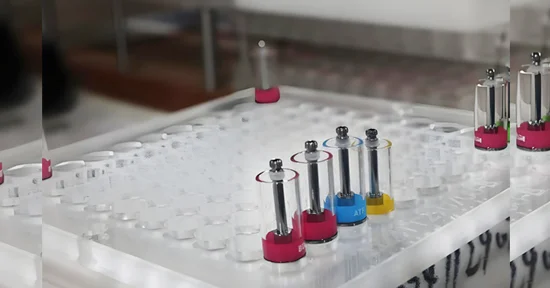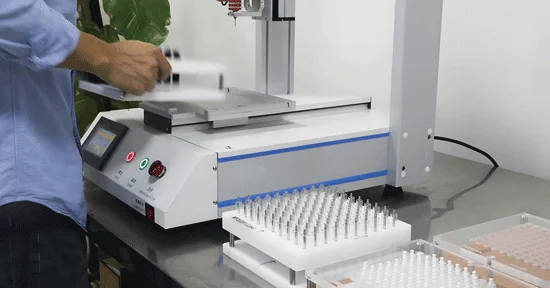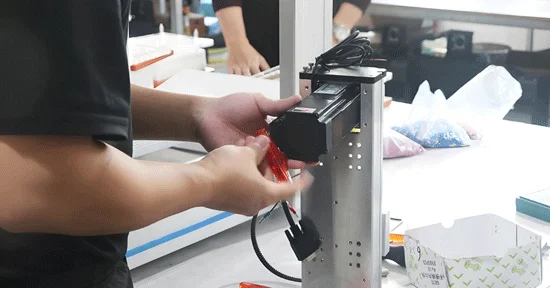How Automatic Cartridge Filling Equipment Improves Production Efficiency
Scaling cartridge production is hard to do profitably when manual steps slow the line, fill volumes drift, and changeovers eat into available hours. Modern cartridge filling equipment changes that equation. By pairing precise dosing with synchronized motion, automated loading/unloading, and integrated inspection, a cartridge filling machine delivers stable takt times and predictable capacity without adding headcount. Just as important, a well-engineered filling machine preserves product integrity—controlling temperature, managing viscosity, and protecting sensitive formulations—while capturing the data you need for audits and continuous improvement.
This article learn how automatic cartridge filling equipment improves five levers: speed/throughput, accuracy/consistency, lower costs, scalability, and better data control.
Increased Speed and Throughput with Automatic Cartridge Filling Equipment
Higher Output from a Automatic Cartridge Filling Machine
A modern automatic cartridge filling machine delivers stable, fast cycles that manual methods can’t sustain. Servo-controlled dosing, synchronized indexing, and automated loading/unloading keep the filling machine on a steady takt time, so more cartridges roll off the line each hour without extra headcount or overtime. Because cartridge filling equipment runs from saved recipes—locking in motion profiles, temperatures, and fill volumes—you get predictable daily capacity and cleaner planning across production, inventory, and customer commitments.

Continuous Operation with Automated Cartridge Filling Equipment
Well-engineered cartridge filling equipment is built for long, uninterrupted runs. Bulk feed hoppers, heated reservoirs and lines (for viscous oils), and closed-loop temperature control keep material flowing consistently, while recipe setpoints standardize speeds and fill targets so the filling machine shifts between batches with minimal tuning. Automated infeed/outfeed via trays, bowls, or conveyors eliminates micro-stoppages between steps, and integrated capping or closing removes manual handoffs—allowing one operator to supervise while the line maintains high, even throughput.
Line Balancing Around the Filling Machine
A fast filling machine only reaches full potential when upstream prep and downstream capping, labeling, and packaging are synchronized. Contemporary cartridge filling equipment offers configurable indexing and handshake signals to harmonize stations, plus buffering and accumulation to prevent starved or blocked conditions during short disturbances. Layering in OEE-aware scheduling and basic bottleneck analysis keeps cycle times aligned across the cell—not just at the cartridge filling machine—which smooths flow, protects takt, and meaningfully lifts overall line throughput.
Improved Accuracy and Consistency with Automatic Cartridge Filling Equipment
Precise Fill Volumes from a Cartridge Filling Equipment
Accuracy protects both margin and compliance, and a well-designed cartridge filling machine is built for it. Servo-piston or peristaltic metering maintains tight tolerances across varying viscosities and fill sizes, while recipe control locks in stroke length, temperature, and dwell time. Stable back-pressure management and correctly sized nozzles reduce meniscus variation and dose drift over long runs, improving Cpk and first-pass yield. The net effect is less overfill—which safeguards profit—and fewer underfills, which cuts rework and customer complaints. Because the motion profile is executed identically each cycle, yields remain steady across shifts and operators.
Reduced Errors with Automated Cartridge Filling Equipment
Automation removes human variability and adds safeguards that manual processes can’t match. In-line checkweighers verify every unit and reject outliers instantly, while integrated vision confirms fill height, component presence (e.g., mouthpieces), and cap orientation before product moves downstream. Closed-loop control allows the cartridge filling equipment to auto-compensate for small thermal or viscosity-related drifts in real time, preventing errors from accumulating. Interlocks, torque monitoring, and role-based recipe permissions limit ad-hoc adjustments, so the line stays within spec without constant intervention—and deviations are surfaced early through alarms and trend data.

Consistent Quality at Scale Around the Filling Machine
Repeatability is the foundation of quality, and an integrated automatic cartridge filling machine delivers it cycle after cycle. Controlled heating, vacuum de-bubbling, and optional inert-gas purging stabilize headspace and appearance while protecting sensitive formulations. Electronic batch records capture timestamps, temperatures, fill volumes, reject reasons, and operator actions, creating full traceability for audits and customer requirements. When this data connects to MES/ERP and SPC dashboards, quality becomes measurable and manageable: genealogy is clear, process capability is visible, and continuous improvement focuses on the few parameters that most influence consistency.
Reduced Costs and Labor with Cartridge Filling Equipment
Lower Labor Costs with a Automatic Cartridge Filling Machine
A modern cartridge filling machine consolidates loading, dosing, and closing into one coordinated cell, allowing a single trained technician to supervise work that once required several operators. By shifting repetitive tasks to automation, you can keep crews lean without sacrificing output and redeploy people into QA, preventive maintenance, or process optimization. The result is a smaller, more skilled team supporting a filling machine that runs predictably shift after shift.
Minimized Product Loss on an Automated Filling Machine
Material waste erodes margin, and cartridge filling equipment tackles it at the source. Precision metering with closed-loop control keeps each dose on target, while in-line inspection catches anomalies before they travel downstream. Closed, short fluid paths and smart purge routines cut residual losses during cleaning and changeovers. Fewer under/overfills, fewer cosmetic defects, and cleaner handling lift first-pass yield and reduce rework—directly improving cost per unit on the filling machine.

Faster Payback from Automatic Cartridge Filling Equipment
ROI is driven by labor efficiency, yield gains, and added capacity: Annual Benefit ≈ (Labor savings + Waste reduction + Capacity gains) − (Depreciation + Maintenance + Utilities). Because every accurate fill protects margin and every avoided stoppage adds sellable units, benefits compound quickly. In many plants, robust cartridge filling equipment pays back in months rather than years, with exact timelines set by local labor rates, throughput, and baseline scrap.
Enhanced Scalability and Flexibility with Cartridge Filling Equipment
Adaptability Across SKUs and Formulations
Demand shifts are constant. Recipe-driven cartridge filling equipment lets you adjust fill volumes, temperatures, and cycle profiles in seconds, while quick-change tooling supports different cartridge sizes and mouthpieces. For thicker oils, heaters, insulated lines, and larger nozzles keep viscosity in check so the filling machine maintains accuracy without slowing the line.
Versatile Operation on One Filling Machine
A modular platform does more with less. A single cartridge filling machine can add preheating, vacuum de-bubbling, nitrogen purge, or post-fill crimping/capping as needed, matching process requirements without a new footprint. Tool-less or low-tool adjustments compress changeovers between batches, enabling small-lot agility while preserving the steady cadence that drives throughput.

Future-Proofing Capacity and Capability
Scaling shouldn’t mean a rebuild. Expandable cartridge filling equipment allows additional heads or faster drives to lift cycle rates, and integrates downstream case packing or cartoning as volume grows. Software upgrades—analytics, alarms, OEE dashboards—extend capability without hardware swaps, keeping the filling machine aligned with your roadmap and compliance needs.
Better Data and Process Control with Cartridge Filling Equipment
Real-Time Data for Actionable Insight
Connected cartridge filling equipment turns the line into a live data source. Dashboards surface throughput, reject reasons, and material usage; batch genealogy ties every unit to the parameters that produced it. Inventory tie-ins track resin/oil consumption in near real time, improving purchasing, lot control, and capacity planning.
Simplified Workflows on a Single HMI
Coordinating filling, capping, and labeling from one interface streamlines daily work. Guided setup, role-based permissions, and clear alarm prompts shorten training and reduce error. Condition monitoring and preventive-maintenance reminders curb unplanned downtime, while standardized recipes let multiple sites run the filling machine the same way for consistent results at scale.
Integrated Systems for a Cohesive Line
Automation delivers most when everything moves in sync. Modern cartridge filling equipment exchanges handshake signals with upstream prep and downstream packaging to avoid starved or blocked conditions. Open connectivity—such as OPC UA or MQTT—links the filling machine to MES/ERP for scheduling, traceability, and quality reporting, generating exportable records that simplify audits and power continuous improvement.
Conclusion
The case for cartridge filling equipment is ultimately an operational one: faster, steadier cycles; tighter dose control; fewer defects; and a workforce redeployed from repetitive tasks to higher-value work.











